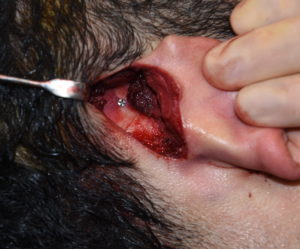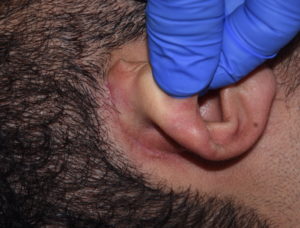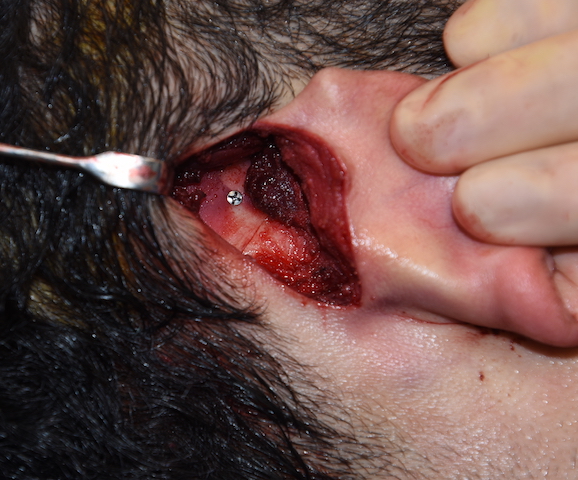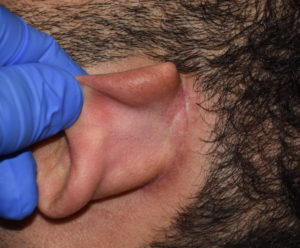Temporal implants provide a permanent augmentation to the entire side of the head. Standard temporal implants initially were developed to treat the more common and limited anterior hollowing that occurs by the side of the eye all the way up to the temporal line of the forehead in the non-hairbearing skin. Custom temporal implants were developed to treat the much larger posterior temporal area along the side of the head. Together these different sizes of temporal implants can augmented the entire area that lies below the bony temporal line along the full length of the skull.
While standard and custom temporal implants are different in both shapes and size, they have been also been placed differently to date from an incision location. The standard temporal implant has been inserted with a small vertical incision just behind the anterior edge of the temporal hairline. (scalp incision) Conversely the custom temporal implant is most commonly placed through an incision behind the ear. (postauricular incision)


The postauricular incisional approach provides an invisible scar location for custom temporal implant placements. Given that it is not very much further from the anterior temporal region, this has also become my preferred approach for placement of standard anterior temporal implants as well.
Dr. Barry Eppley
Indianapolis, Indiana




